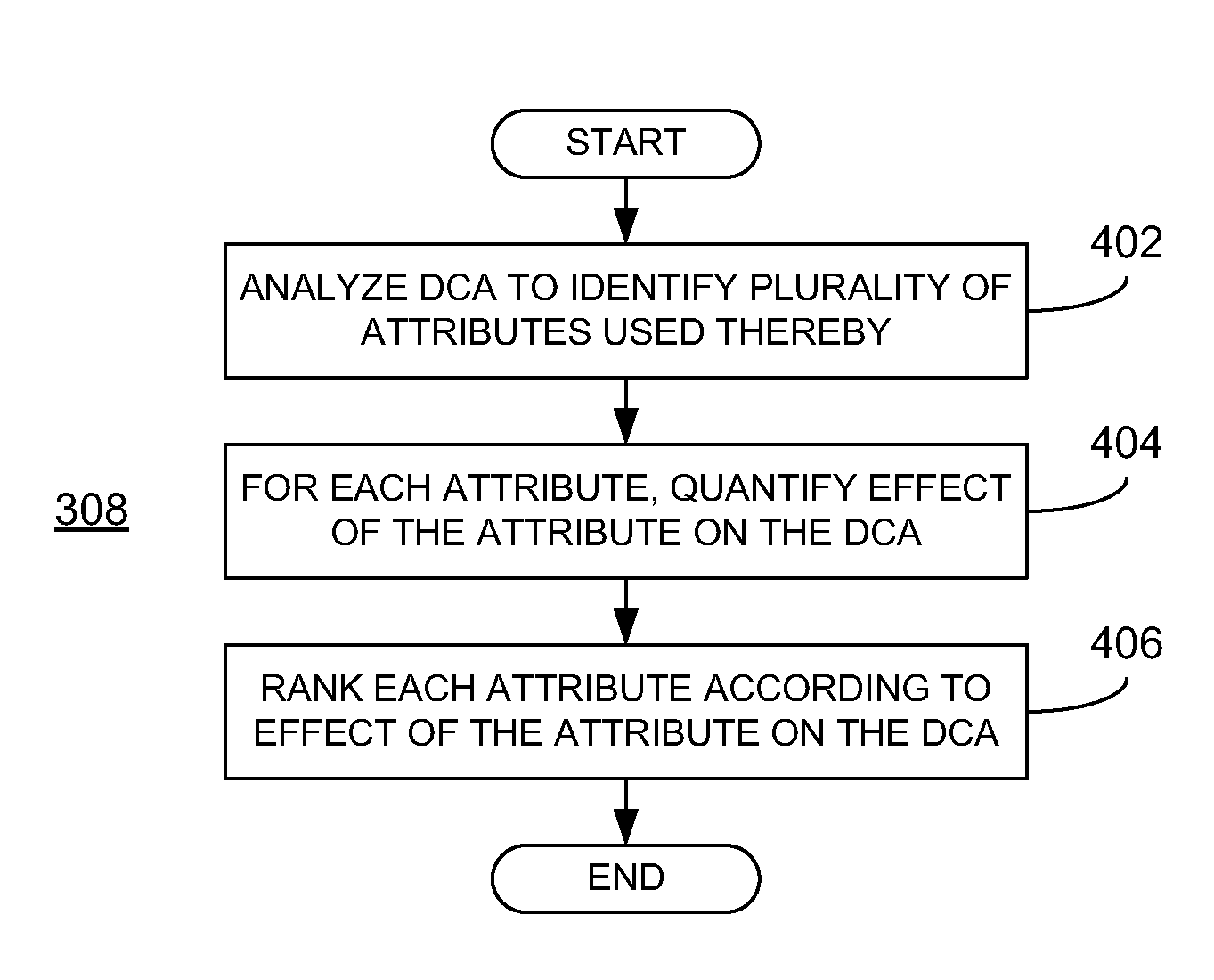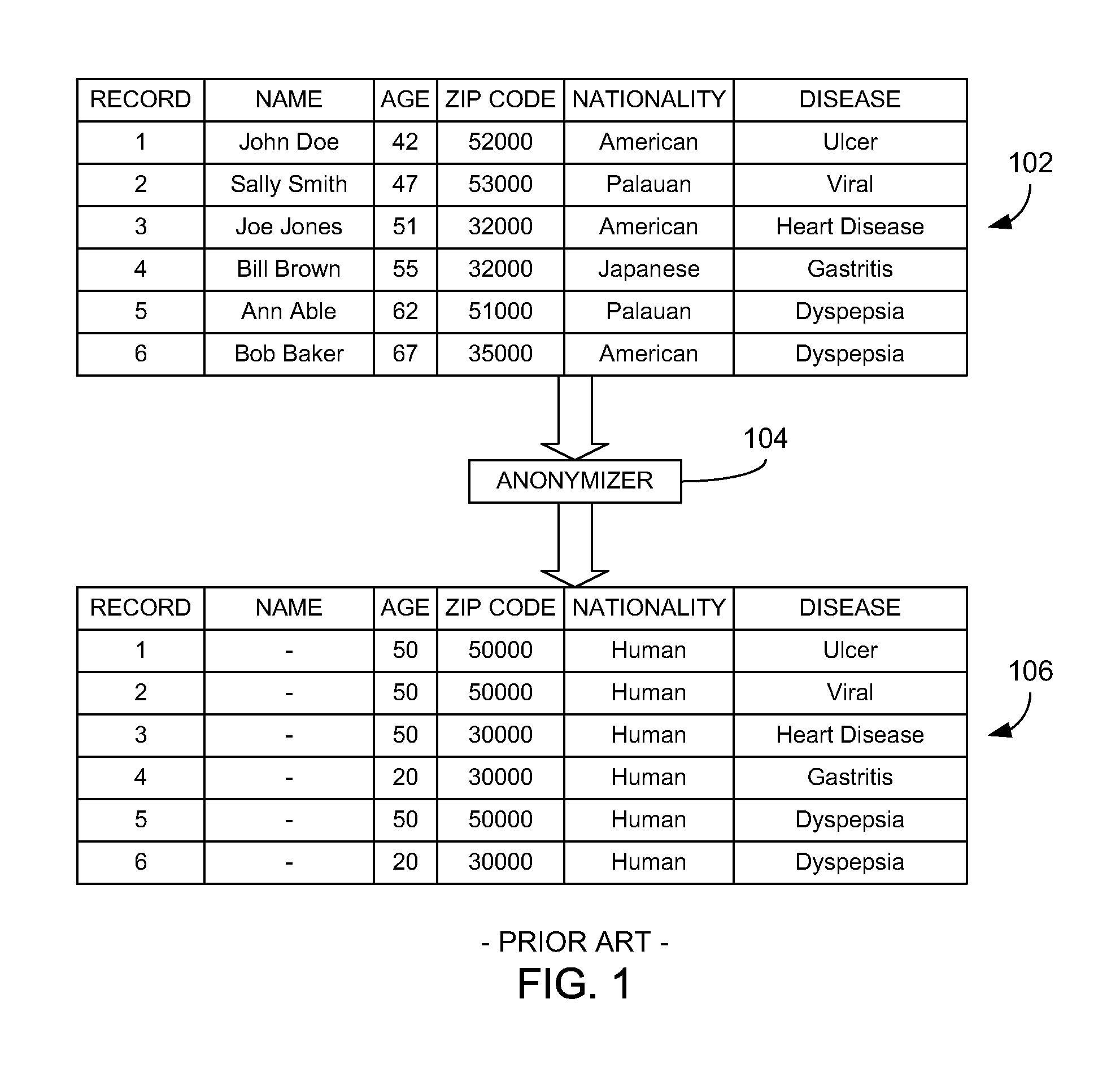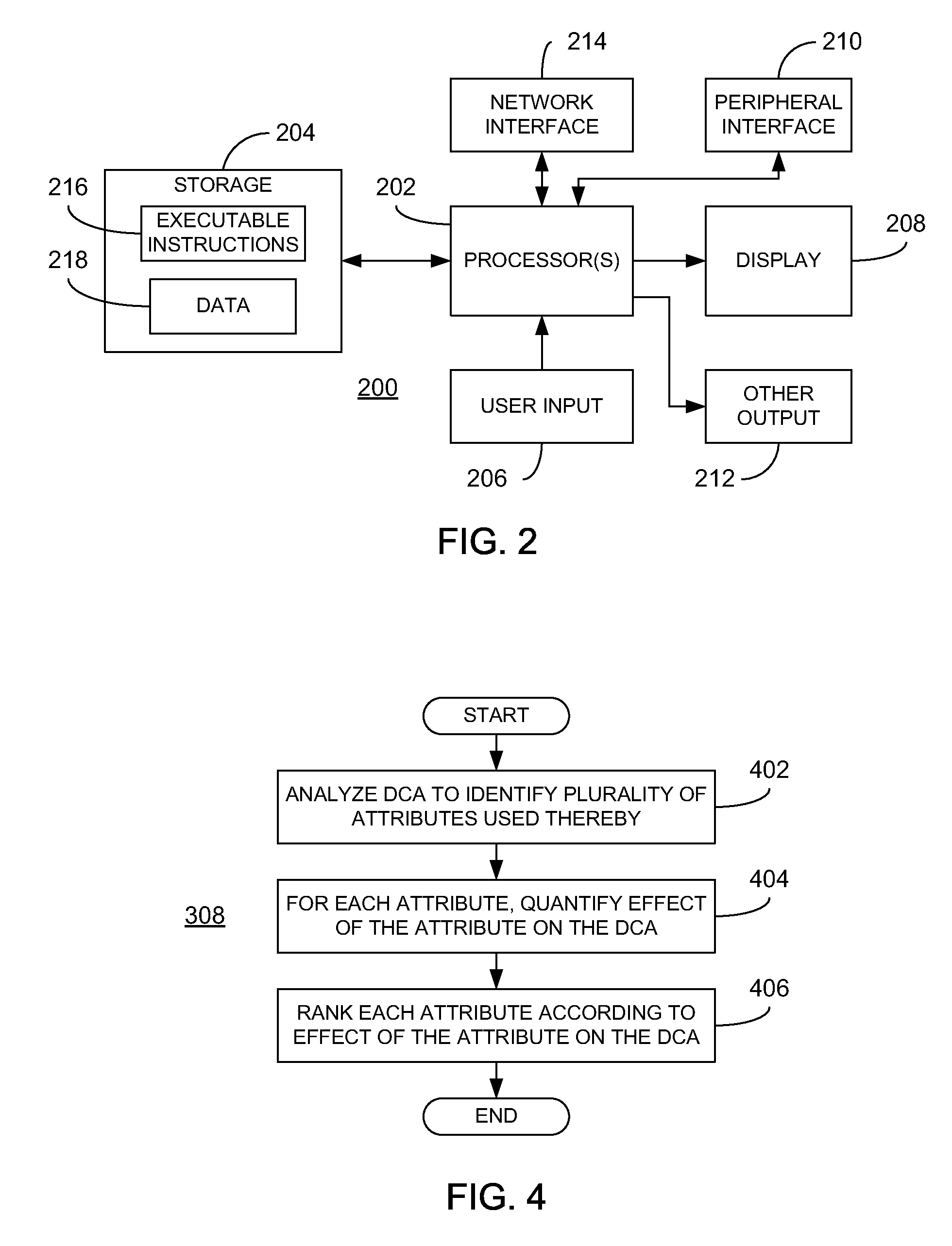Database anonymization for use in testing database-centric applications
a database and database technology, applied in the field of database anonymization, can solve the problems of increasing the difficulty of sharing confidential information, lack of meaningful, and the best difficulty of testing the dca, and achieve the effect of improving the anonymization of databases
- Summary
- Abstract
- Description
- Claims
- Application Information
AI Technical Summary
Benefits of technology
Problems solved by technology
Method used
Image
Examples
Embodiment Construction
[0019]Referring now to FIG. 2, a representative processing device 200 that may be used to implement the teachings of the instant disclosure is illustrated. Using know programming techniques, the device 200 may be used to implement, for example, at least a portion of the processing illustrated in FIGS. 3 and 4 as well as one or more components of the system 500, as described in greater detail below. Regardless, the device 200 comprises a processor 202 coupled to a storage component 204. The storage component 204, in turn, comprises stored executable instructions 216 and data 218. In an embodiment, the processor 202 may comprise one or more processing devices such as a microprocessor, microcontroller, digital signal processor, co-processor or combinations thereof capable of executing the stored instructions 216 and operating upon the stored data 218. Likewise, the storage component 204 may comprise one or more devices such as volatile or nonvolatile memory including but not limited to...
PUM
 Login to View More
Login to View More Abstract
Description
Claims
Application Information
 Login to View More
Login to View More - R&D
- Intellectual Property
- Life Sciences
- Materials
- Tech Scout
- Unparalleled Data Quality
- Higher Quality Content
- 60% Fewer Hallucinations
Browse by: Latest US Patents, China's latest patents, Technical Efficacy Thesaurus, Application Domain, Technology Topic, Popular Technical Reports.
© 2025 PatSnap. All rights reserved.Legal|Privacy policy|Modern Slavery Act Transparency Statement|Sitemap|About US| Contact US: help@patsnap.com



